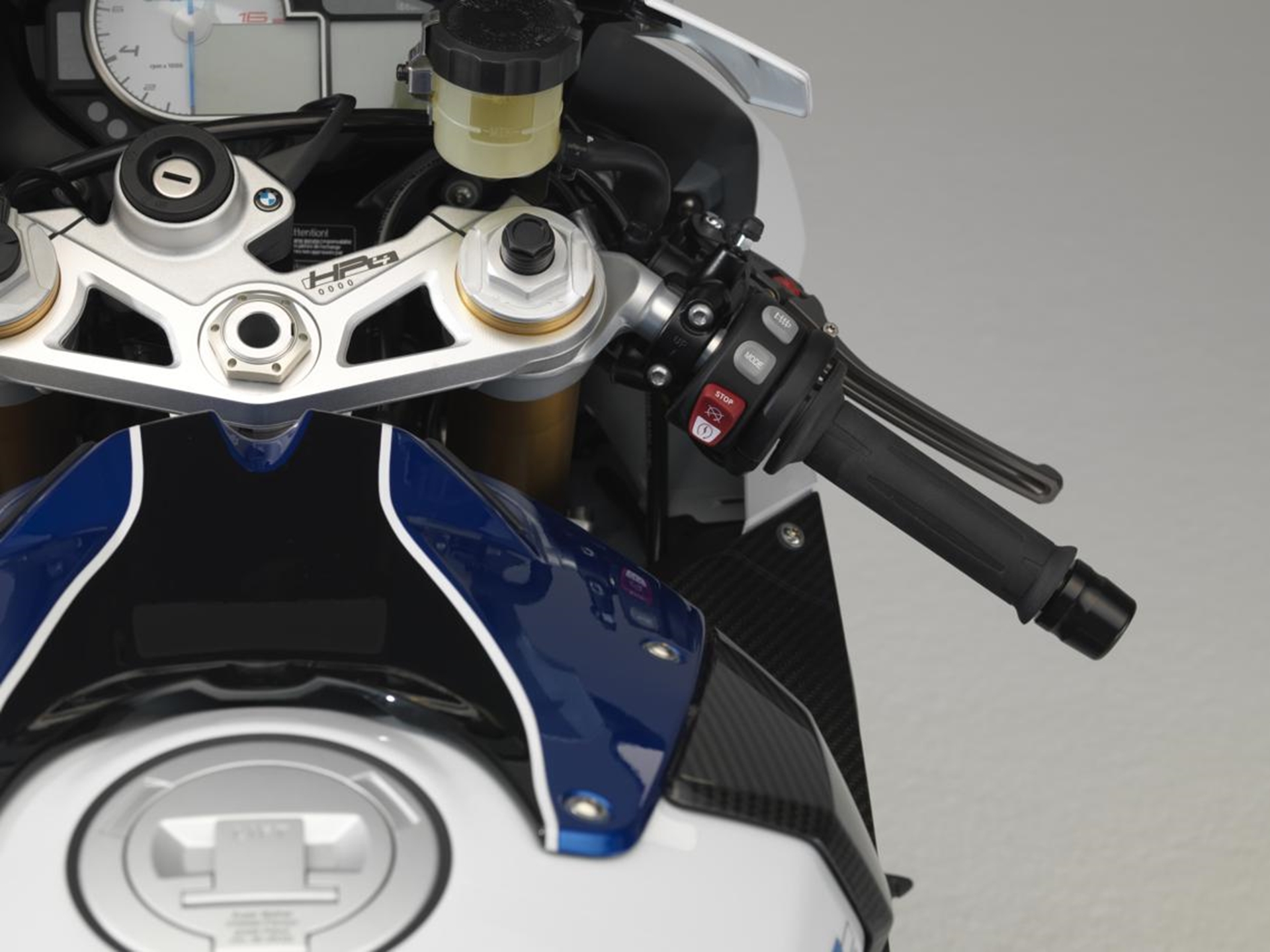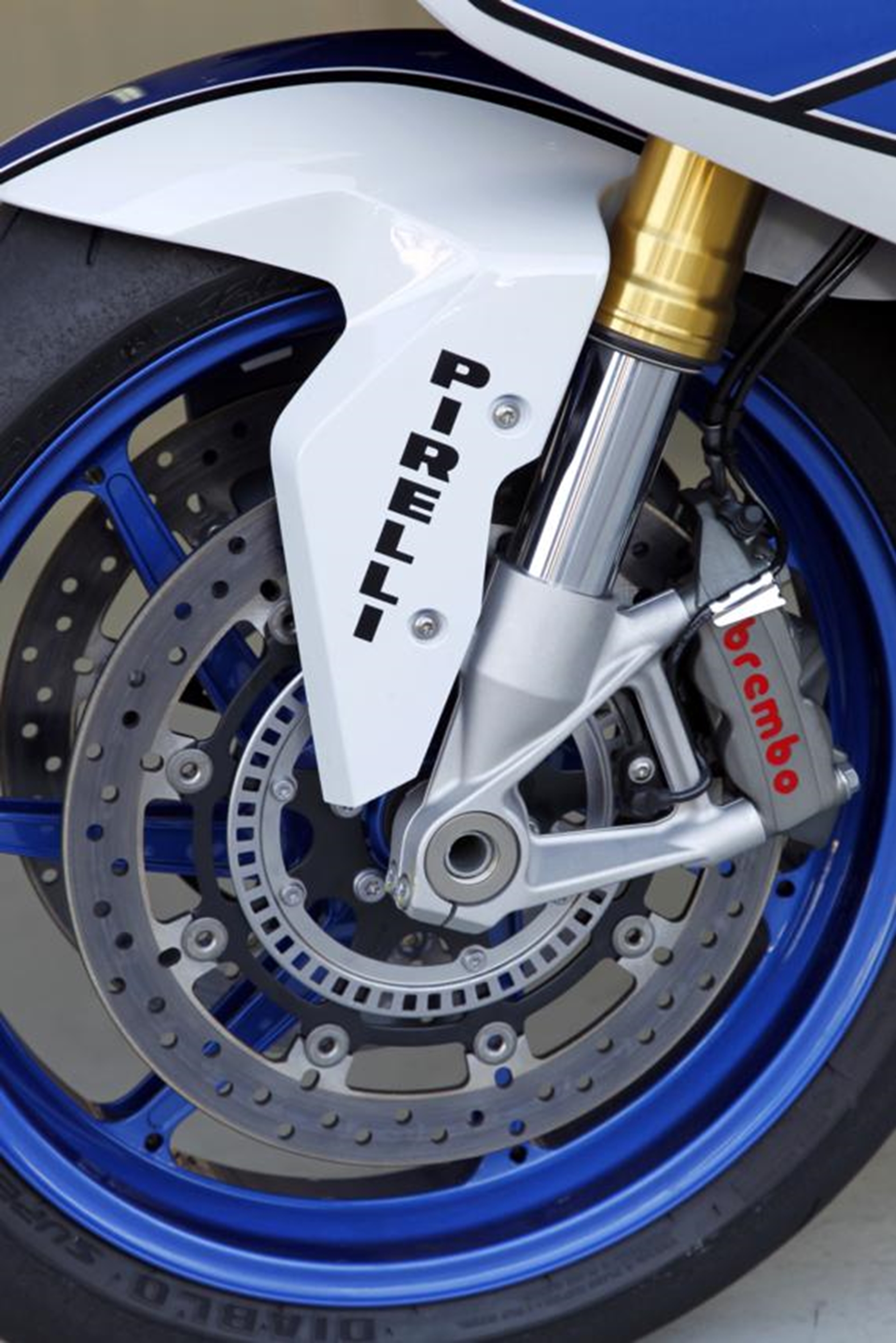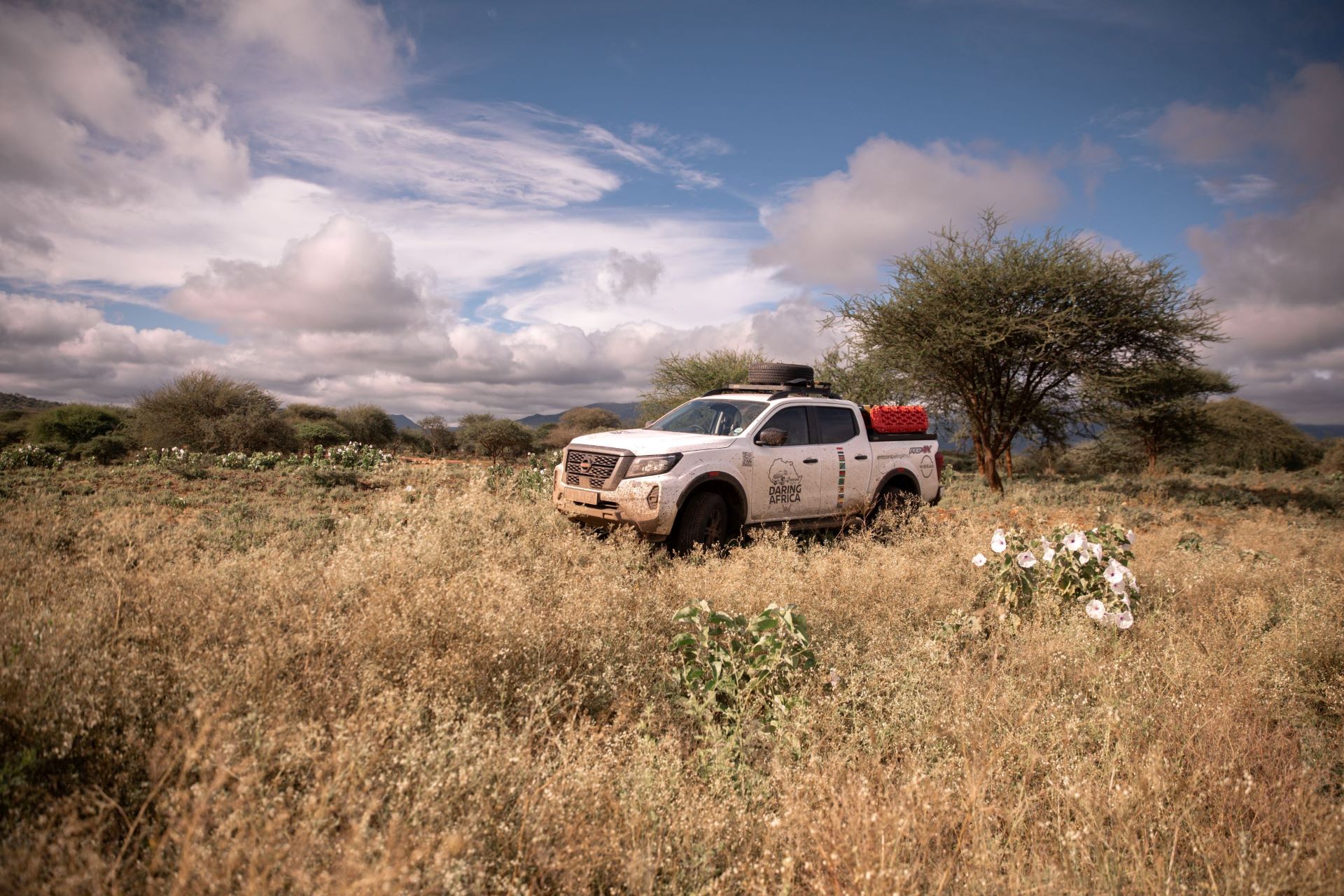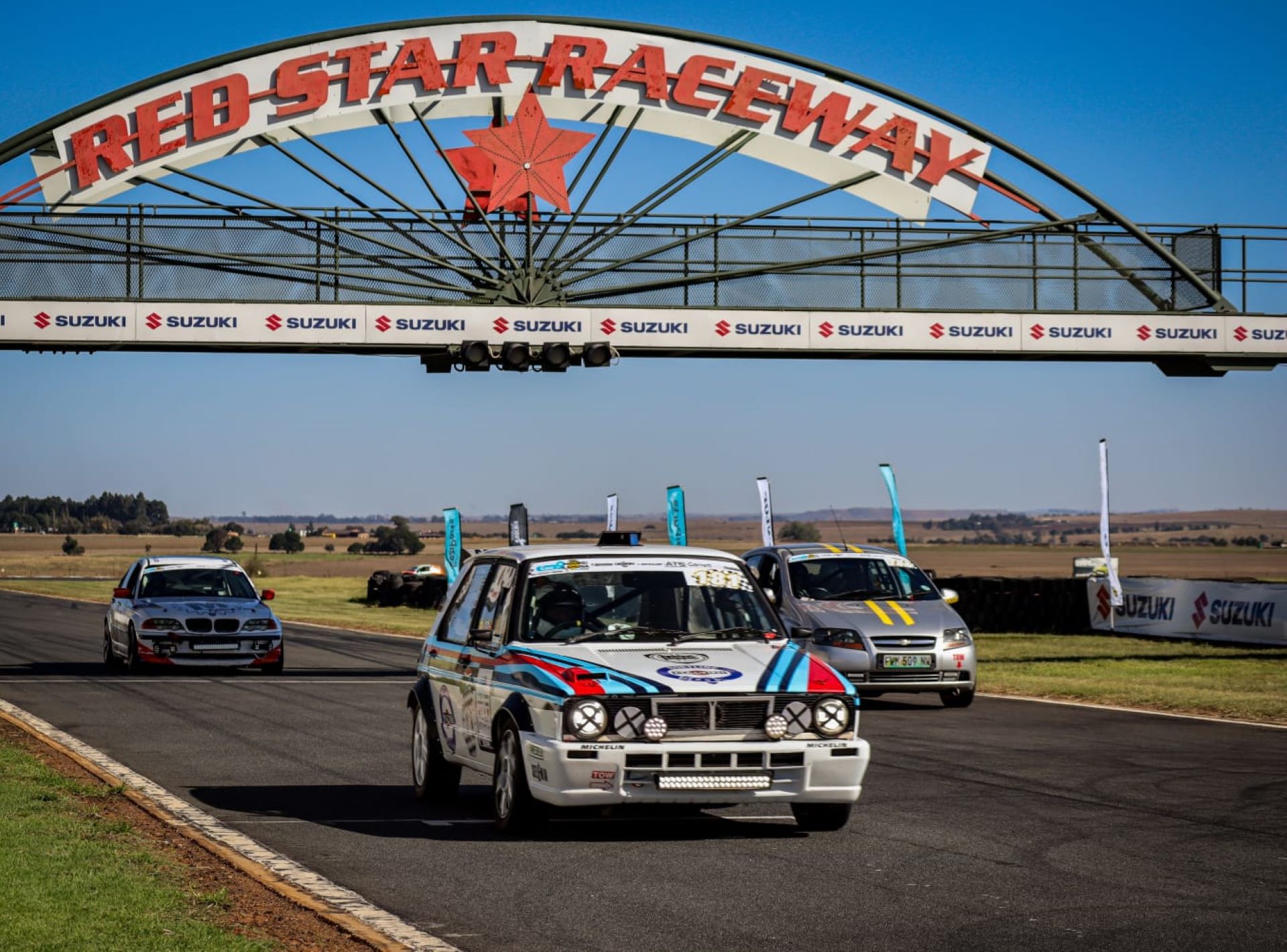Dynamic Damping Control DDC – dynamic damping adjustment to match the given situation.
BMW Motorrad has stood for leading expertise and groundbreaking innovations for 90 years, and this applies equally to the area of suspension. One example among many is Electronic Suspension Adjustment ESA introduced in 2004, a system for the electronic adjustment of damping and spring mount.
Five years later this system was fitted in the BMW GS models under the name of Enduro ESA, allowing the suspension to be raised for off-road use. In 2008 BMW Motorrad presented today’s ESA II, permitting electronic adjustment of the spring rate for the first time, thus allowing adaptation to varying load states.
Dynamic Damping Control DDC, fitted in the HP4 as a world premiere in a road-legal motorcycle, goes one step further. This system involves dynamic adaptation of compression and rebound stage damping to suit the given situation, for example fast changes of direction in chicanes or uneven stretches of road. The semiactive suspension system reacts automatically to manoeuvres such as braking, accelerating and cornering on various road surfaces and sets the correct level of damping by means of electrically actuated damping valves. Unlike ESA II it is not characteristic lines but characteristic maps which ensure optimum damper adjustment within a defined range.
The basic settings of Dynamic Damping Control DDC are linked to the modes “Rain”, “Sport”, “Race” and “Slick”, which can be conveniently selected by the rider at the press of a button. The set-up menu in the instrument cluster allows the damping to be adapted more closely to the rider’s preferences. As with a mechanical setting, it is possible to apply a softer (-7) or a tighter (+7) set-up. The adjustment of the spring mount (spring preload) is carried out by hand using a 17 mm wrench.
In the “Rain” and “Sport” mode, the DDC set-up focus is on a full, pleasant damping as preferred when riding on country roads or on poor to well-asphalted roads. In the “Race” and “Slick” modes, however, the DDC set-up is geared more towards performance, supporting a very sporty riding style on the race track in particular. Damper set-up is tight and gives the rider crystal-clear feedback at all times.
The great benefit of DDC lies in the fact that it is dynamic, allowing damping set-up to be adjusted while riding. During development of the DDC, BMW Motorrad also benefited from synergies with BMW automobiles, where this technology has been used in serial production for some time. The challenge lay in adapting it to motorcycle physics and in integrating the appropriate control systems.
Damping adjustment within the millisecond range is effected by means of an electrically controlled valve with a piston ring being altered, thereby adjusting the through-flow cross-section for the damper oil. This means that the HP4 provides the optimum setting for damper rebound and compression stage in every situation. Compromises in terms of suspension set-up are a thing of
the past. DDC provides maximum traction for optimum deployment of
engine power during acceleration.
Before setting off when the ignition is switched on, the system check is activated first, initiating the flow of information from the engine control system, sensor box and spring travel sensor to the Dynamic Damping Control DDC. The DDC control unit processes a large amount of information relevant to driving dynamics such as spring travel, road speed and throttle valve position. The sensor box also supplies information to DTC on the banking angle of the motorcycle and other parameters.
The two fork legs of the DDC upside-down fork are identical in structure – the difference lies in the interior of the fixed fork tube and slider tube. The setting mechanism for the 15 mm (RR 20 mm) variable spring mount (spring preload) is in the right-hand fork leg, for example. The valve responsible for the dynamic build-up of damping power is housed in the damper cartridge of the left-hand fork leg, together with its electrical connection. The balancing chamber in the lower section of the left-hand fork leg is subjected to increased gas pressure and absorbs the displaced volume of oil from the damper piston rod in the closed cartridge.
As standard, the telescopic fork damping is controlled on an integrated basis and not separately for the rebound and compression stage. However, the wiring harness of the HP4 is prepared with a connection for a linear spring travel sensor at the fork. The control unit detects when the sensor is connected and extends the menu in the instrument cluster to include a separate rebound and compression stage setting. This sensor is available on the accessory market.
The new DDC spring strut is bolted onto the frame by means of a light alloy insert, the so-called sliding block. The motorcycle is supplied with a 0 mm insert. The two inserts included (1.5 and 3 mm) allow the rear of the vehicle to be raised and the suspension geometry to be quickly adapted to prevailing road conditions and the rider’s individual preferences. When using a different sliding block, the rear spring travel sensor has to be calibrated accordingly using the set-up menu. At the front the adjustment is made in the usual manner by means of the fork bridge clamp.
Race ABS with IDM setting – for top brake performance on the race track.
BMW Motorrad was the first motorcycle manufacturer in the world to fit its machines with the antilock system ABS over 20 years ago, setting a milestone in active motorcycling safety at the time. Today all BMW motorcycles throughout the world are fitted with ABS as standard. With the presentation of the S 1000 RR in 2009, BMW Motorrad added another milestone in brake technology when it launched Race ABS, specially tailored to the supersports needs of the RR.
BMW Motorrad now takes another consistent step forward in the HP4. The system has been further refined and in particular adapted for use on the race track. As before, it has four different modes for wet surface (“Rain”), road (“Sport”), race track with supersports tyres (“Race”) and race track with slicks (“Slick”).
In the modes “Rain”, “Sport” and “Race”, the Race ABS operates on a part integral basis, in other words the rear wheel is automatically braked when the front wheel brake is activated. This ensures that the motorcycle remains considerably more stable in the braking phase, permitting very short braking distances.
In “Slick” mode, the Race ABS setting in the HP4 is now at maximum deceleration, giving the rider transparent feedback on the level of grip at all times. The new IDM setting – developed during the German Superbike Championship – offers refined control impulses and allows maximum deceleration at the grip limit of the tyres. In this mode, both the rear wheel lift detection and ABS function are deactivated for the rear wheel, allowing skilled riders to control the HP4 using the rear wheel brake and perform brake drifts.
New rear wheel tyre, size 200/55 ZR 17. Adapted and finely adjustable Dynamic Traction Control in “Slick” mode.
The HP4 now features a rear wheel in the new 200/55 ZR 17 format.
Dynamic Traction Control DTC – familiar from the RR – has been optimised for supersports use in the HP4. While riding in “Slick” mode the DTC can be adapted to changing grip levels by using the shift paddle “Slick +/- DTC” on the left-hand control panel on the handlebars. This now gives the rider the option to respond flexibly to environmental conditions such as air and asphalt temperature and changes in tyre grip and road surface states.
The adjustment range is from –7 via 0 to +7. Level 0 corresponds to the “Slick” mode setting familiar from the RR, while – 7 represents a significant reduction in control intervention. This allows much more powerful slides to be performed, for example. By contrast, the DTC system intervenes much more perceptibly at +7.
Launch Control for optimum acceleration and perfect starts in “Slick” mode as well as adapted wheelie detection.
A high level of skill is required to effectively turn power into forward thrust when accelerating from standing – as when starting a race for example – especially in the case of a high-performance supersports bike. For this reason, the HP4 is the first BMW motorcycle to offer a so-called Launch Control function which provides active set-off support for the rider in “Slick” mode.
In order to ensure full acceleration from standing, Launch Control limits engine torque so as to provide the maximum torque transferable from the rear wheel whenever the front wheel is under no throttle. This means the rider has to focus much less on the throttle because he is controlling acceleration solely using the clutch. He can leave the throttle virtually entirely open. During the actual starting process engine speed is limited to 8,000 rpm; when the 60 km/h mark is passed this limit no longer applies. If the rider shifts into second gear, the engine torque is automatically corrected to allow for the change in gear ratio, once again transferring maximum torque to the rear wheel.
Launch Control is deactivated when third gear is engaged, when the machine reaches a banking angle of over 30 degrees or when the rider switches into a different DTC mode. The function is also deactivated if the ignition is switched off or if the engine stalls.
The HP4 also supports the rider when Launch Control is activated by means of the adapted wheelie detection function, which reduces engine torque as soon as any lift is detected in the front wheel. If Launch Control is not activated, wheelies are permitted in “Race” mode at a banking angle of under 25 degrees and in “Slick” mode at less than 30 degrees.
Shift assistant for upshifting with virtually no interruption of tractive power.
The shift assistant is a standard feature of the HP4. It enables the rider to shift up a gear without activating the clutch and therefore virtually without any interruption of tractive force. Here the ignition and fuel feed are interrupted for a fraction of a second. The aim is to save valuable lap time when accelerating.
Light forged wheels and an even more high-performance brake system.
The new HP4 features high-quality forged light alloy wheels so as to reduce rotating masses, thereby optimising acceleration, deceleration and handling. The new finely wrought 7-spoke wheels weigh 2.4 kilograms less than the wheels of the RR. In the HP4 the wheels are finished in anodised black, while the HP4 with Competition Package has wheels finished in Racing blue. Further weight reduction is provided by a new, lighter sprocket carrier and a smaller and lighter battery with a capacity of 7 ampere-hours.
The front brake system has 9x floating brake discs with a diameter of 320 millimetres and radially arranged Brembo monoblock brake calipers. Brake pads developed especially for the HP4 contribute to further improved brake performance, excellent stability on the race track, too, and outstanding controllability.
Performance-oriented engine set-up with optimised torque development.
The new HP4 is fitted with the water-cooled 4-cylinder in-line engine of the S 1000 RR with a peak output of 142 kW at 13,000 rpm and a maximum engine speed of 14,200 rpm. Its maximum torque of 112 Nm goes on stream at 9,750 rpm.
The 4-cylinder in-line engine in the HP4 now provides full output in all modes “Rain”, “Sport”, “Race” and “Slick” with an identical throttle curve and thus the same throttle response. In this way, the HP4 engine is adapted to its preferred area of use, namely the race track.
For even more powerful acceleration out of bends, the torque has also been increased in the 6,000 rpm to 9,750 rpm range. For “Rain” mode, output and torque have been smoothed out in the 2,500 to 8,000 rpm range, providing a particularly harmonious curve. This also adapts the motorcycle’s characteristics to conditions in which there is reduced grip.
Light titanium exhaust system with controlled acoustic valve and interference pipe.
The new exhaust system, made entirely of titanium, reduces the weight of the HP4 by 4.5 kilograms as compared to the S 1000 RR, reflected in further optimised handling. The new exhaust system has an interference pipe between cylinders two and three, a controlled acoustic valve and a
closed-loop catalytic converter. It has been possible to optimise the torque curve thanks to the new exhaust system, with the engine application adapted accordingly.
Instrument cluster with dial face in new design and extended range of information.
The new HP4 has a newly designed dial face with HP4 inscription and also provides three new information items. The information display now shows the DDC set-up menus as well as the figures for DTC fine adjustment and Launch Control activation.
Supersports design with monoposto look, elongated engine spoiler, tinted windshield and LED turn indicators.
The HP4 fully lives up to its dynamic aspirations in terms of visual appearance, too. The bike is always fitted with a passenger seat cover in keeping with its preferred solo use for sports purposes. However, it can optionally be supplied with a passenger package (passenger seat including passenger footrest system as an ex works option) for riding with a partner.
There is also a dual-section engine spoiler – elongated as compared to the RR – and a tinted windshield, both of which emphasise the dynamic qualities of the HP4. The bike also features small, light LED turn indicators. The exclusivity of the HP4 is borne out by an HP4 logo with serial number applied by laser engraving on the upper fork bridge. The serial numbering does not apply separately to HP4 and HP4 Competition Package but is continuous.






